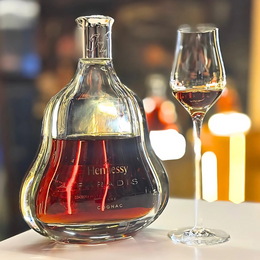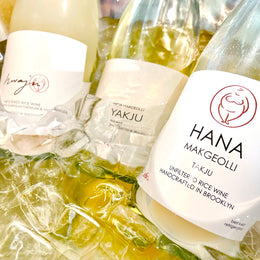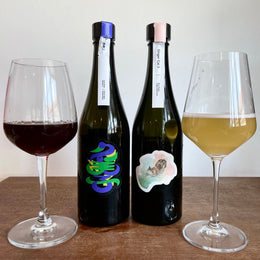
Background: a marc made in Alsace from the gewurztraminer grape. Unaged, a marc de gewurztraminer is among the most powerful and expressive of marcs. This particular bottling was aged 40 years in wood.
Nose: unrivalled depth and intensity; penetrating -- the entire olfactory package evokes an almost synesthetic shape of a spearhead; a neatly compacted melange of strong-smelling plant saps and their by-products -- the likes of plant-based gums and resins -- forms a core around which all the other notes are tightly woven to form a dense yet elaborate mise-en-scen; the different aromas seem to hover at consistent and specific locations relative to the orientations of the liquid and the glass; the only other spirit I have encountered giving rise to such a precise and coherent three-dimensional nosestage (an analogue to the audiophile’s soundstage) is the Rumclub Hampden 1990; due to the stable nature of the nose, the notes listed henceforth are sorted according to the (approximate) distances from the liquid at which they are first detected, from the farthest to the nearest; leather; laundry detergent; Dove shampoo; potpourri; lemongrass; a hotchpotch of floral and green essential oils, amongst which lavender and tea tree are the most prominent; exhaust fumes; cooking gas; tobacco; wood varnish; WD-40; grape bubblegum; concentrated lychee flavouring; baked clay; wet cardboard; freshly unwrapped plastic furniture; melting PET bottle; chalk dust; damp, musty wooden attic; antique furniture shop; thick vintage woollen coat, left too long in a cabinet with too many mothballs; smoke and petrichor, from setting up a campfire after a rain; shrimp paste; sambal belachan; five-spice alongside curry, tumeric, and cumin; tom yum goong; common confectionery bases such as tart shortcrust, cake batter and cookie dough; coconut-based sweets -- fried coconut shavings, gula melaka, coconut whipped cream, assorted nyonya kuehs; a concoction of sweet red and white wines; apple and berries cider; brewed barley drink; sweet nihonshu; makgeolli; cereal; baguette; brioche; petrol; gun oil; shoe wax; leather cream; cocoa butter; dark chocolate; liquorice; California raisins; dried figs and black dates; grilled and fried carbohydrates, particularly sticky glutinous rice cake; baked Japanese sweet potato with bacon bits and black pepper seasoning; fresh chilli in sriracha sauce; a bunch of bitter chinese herbs, thoroughly mixed and ground to bits; forestry and earthy notes make up the base; fresh lumber; wet forest undergrowth; sulphurous mangrove swamp; lush canopy; fresh earth; manure; Chinese tonic soup with pork fat; smoked ribs with barbecue sauce; jamon bellota; beef jerky; roasted nuts; first morning urine.
Palate: the mouthfeel is sharp, clean, and extremely punchy; the palate is delivered with incredible intensity -- a small sip suffices to set off a mouth-coating explosion of flavours; the backbone of the palate stretches from the initial attack to the start of the finish, and is made up of common forest notes -- woody branches and stems/trunks, moss, and coniferous scents; industrial notes are dominant on entry; WD-40 and other industrial lubricants; rusty metal; soldering iron; melting plastic; fresh and burning rubber; I cannot not think of the Long Pond TECA 2003 and its infamous evocation of a “smouldering landfill”; lots of deep and rich umami notes follow closely; century egg; blue cheese; tom yum goong; pork floss; hebi hiam, a condiment of dried shrimp stir-fried with sambal chilli; har cheong gai with its earthy, nutty shrimp and sesame sauce; Lao Gan Ma Spicy Chilli Crisp; then comes an intermission of brighter flavours; star anise; sichuan peppercorn, complete with its tongue-numbing effect; borscht soup with a dollop of sugar; fresh grapes and strawberries doused in cream and honey mustard dressing; dried dark fruits like raisins, figs and dates; a hint of dried apricot; chemical notes of varnish, acetone and turpentine provide a taste of the things to come; the mid-palate opens with a huge sledgehammer hit of flavours amalgamated from various forms of rot and ferment and sweet-smelling lab solvents, a hit that I had thought only exists in strong aroma baijius, and yes, Savanna HERRs; here, the savouriness and sourness go hand-in-hand; aged soy sauce; vinegars, from old balsamico to Chinese white vinegar to apple vinegar to pineapple vinegar; salty, briny and creamy, not unlike a juicy Totten Inlet Virginica oyster; salted lassi with herbs, especially mint, and berries; a whole trolley of sweets, mainly cakes; marble cake; chocolate cake; blackforest cake; Christmas cake; vanilla baked alaska; overbaked cheese tart and coconut tart; lychee rose cake; sourdough bread; a note that lies somewhere between sweetened barley water and makgeolli; fried dough or other forms of carbohydrates -- french fries, perhaps -- in overused oil that has turned slightly rancid; this spirit has much in common with some high-ester Hampdens, really; there is also a petroly aspect to it that recalls the Rare Malts St Magdalene 1979; as funky as the front- and mid-palates are, the funk is ratcheted up a notch on the back-palate; olives in brine; tapenade; fresh soil; barnyard funk, from hay to farm animals and their waste products; hot bitumen; walnut, sesame and peanut oil; cod liver oil; spoilt milk; overripe custard apple or soursop, and maybe indistinct rotten fruits of other kinds; some sulphurous associations like vomit, struck match and rotten egg; grape pomace finally makes an appearance as the back-palate segues into the finish; the pomace comes suspended in grape juice, and the suspension is presented as a clear, sustained note, adorning the gustatory tapestry with a respite of brightness and freshness.
Finish: virtually eternal; starts out empyreumatic; incense and tobacco, and the ash resulting from their combustion; traditional Chinese salves and ointments, with a surfeit of menthol among their ingredients; toast, meringue and shortcrust, served burnt; dark chocolate bonbon with mixed nut butter filling; wok-fried chestnuts with sugar, a popular Chinese street food; sweet-savoury nougat, reminiscent of the Persian sohan; yellow tropical fruits, especially mango, in yoghurt form; concentrates of different melons -- watermelon, rockmelon, honeydew, winter melon; artificial lychee flavouring; then tea and coffee associations abound; top grade pu-er; meaty, earthy oolongs exemplary of the Wuyi mountains -- rou gui and da hong pao; some lapsang souchong thrown in for good measure; green coffee bean; freshly roasted coffee beans; a shot of espresso; coffee grounds steeped too long in water; the ultimate Chinese herbal soup, brewed with animal bones and fat and a ton of herbal tonics, including truckloads of chen pi and gan cao; some kind of gamey soup, perhaps sup kambing, or even kalle-pache; the extra-fermented notes of strong aroma baijiu comes back, this time creamier than it was on the palate; the aftertaste really sticks -- to wash it off with water is nigh impossible; immensely flavourful, it brings forth notes from the sea, the mountain and the forest, punctuated by funk and oddity of the ilk more often associated with urban living, all delivered with remarkable clarity; coastal breeze; seawater; freshly shucked seashells; kelp in dashi; scallop consomme brewed with earthy, strong-tasting mushrooms in the vein of morel, shiitake and porcini; high quality canned tuna in brine; magurozuke; more tom yum goong, with more seafood and lemongrass and tamarind; loads of olives, both black and green; sugarcane and lemon juice with a dash of salt; cane syrup; salmiak liquorice; hard mineral water found in a mountain spring; wet rocks along a stream; granite quarry after a heavy downpour; metallic notes associated with both wet and oily metals, including but not limited to notes of wet copper coins, and an armskote full of well-oiled rifles; freshly cut leaves and branches; tree bark; wet grass; fungi-ridden, dark and damp forest floor; plant saps and their hardened forms; rooty, viney herbal liqueurs galore, from Unicum to Chartreuses to zhu ye qing jiu; the sweet wood and grass notes of an aged agricole from Martinique; grass jelly; tropical fruits of varying ripeness -- unripe green papaya, barely ripe durian and overripe jackfruit; cured meat; cold cut platter, with a focus on foie gras pâté and duck rillette; rich and unctuous seasoned raw beef -- think a mashup of steak tartare and gyu yukke, with extra doses of vinegar, salt and soy sauce; musky body odour; sweat-drenched clothes left to dry; the sharp and sweet initial kick of vomit and diarrhea.

Conclusion: this is bar none, the most singularly deep, concentrated and intense spirit I have come across. The first time I tried it at a bar, I was at a loss for words to describe this wee dram that all but overloaded my senses. My second glass, two weeks later, was no less challenging, but I was determined to conquer it. So I brought a bottle home, and slowly dissected it over the next few pours. Once I got past a certain point in my tasting, things just clicked, and I found myself pulling notes from the liquid like a madman. I never aimed to be exhaustive in my tasting notes, but I will be damned if this is not a gift that keeps on giving. Am I starting at the top of the marc pyramid? Or am I barely scratching the surface of what marc (or pomace brandy in general) can offer? Having only had two marcs and a few more grappas, I cannot conclude either way with any certainty. However, my intuition implores me to lean strongly towards the former. As such, I shall score this without recalibrating the distribution of my scores.
Score (assuming a normal distribution with mean 50): 98/100
Image Courtesy of u/zoorado.
![]()
u/zoorado







